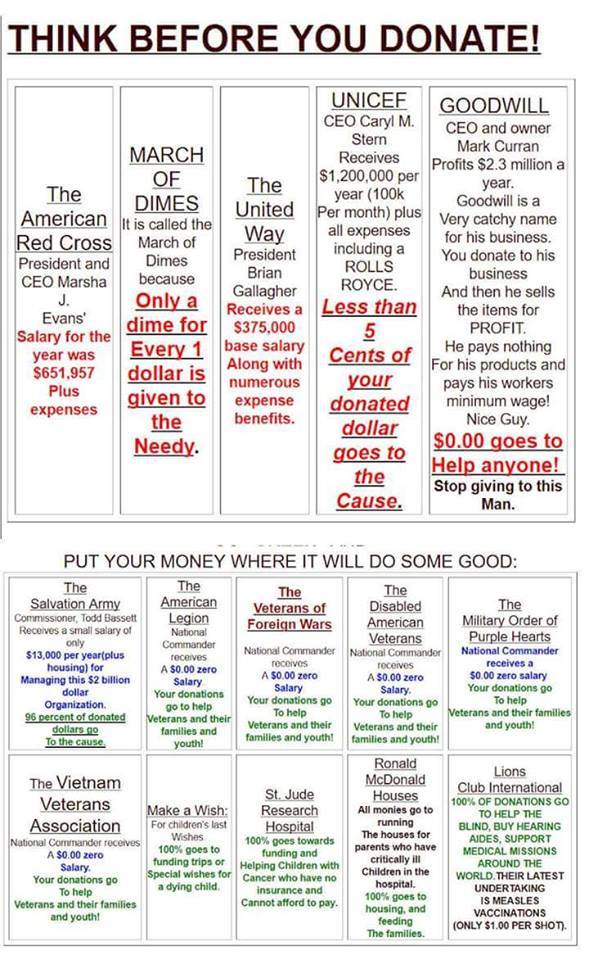Facebook makes the sharing of information easy. Unfortunately, that information isn’t always accurate. After the Hurricane Harvey disaster, this chart has been making the rounds again. Factually, almost everything about it is wrong including the salaries, percentages, names of CEO’s, etc. That’s the easy answer.
 But I think the chart opens the door for a discussion of a couple of wide-spread conceptual problems people seem to have about charities. Here are three main points, a good philanthropist understands.
But I think the chart opens the door for a discussion of a couple of wide-spread conceptual problems people seem to have about charities. Here are three main points, a good philanthropist understands.
1. Charities Do Different but Equally Valuable Work
For the person who created this chart, all charities are viewed through the lens of helping the needy. But that’s not exactly right. For example, the March of Dimes works to improve the health of mothers and infants which includes a lot of scientific research on preventing premature births and caring for premature babies. That’s not exactly “giving to the needy”, and so it’s difficult to compare that to the Salvation Army who does a lot of work to meet immediate needs like food and shelter.
It’s really important as a philanthropist (which is anyone who cares what happens to their donation after they make it) to be clear on what kind of causes you want to support and then find the charity that is doing the best possible work on those causes. If maternal and infant health is really important to you, then you’d want to consider supporting the March of Dimes. If you prefer to “help the needy” by providing emergency food and housing, then you’d look to programs like food banks or homeless shelters or the Salvation Army. Both are important work. But you are one person. What work do you want to support?
2. Charity Work is Work
Another misconception in this chart is that it equates zero salaries for CEO’s as good. 100% of a donation can go to “the cause” and still be 100% wasted. Doing good charity work costs money. You need employees. Good employees. Trained employees. You need software. You need to be able to identify who needs help, who’s gotten help, and what kind of impact that help has made. Doing good charity work also means bench marking what you’re doing with what other people are doing. If there’s a better way, then you want to do it, too. Charity work is work done by people who also have families to support and that means that we should expect it to cost money.
Instead of asking, “How much of my donation goes to the cause?” ask,
What kind of impact are you making? How do you know?
How much does it cost to do your work? Is that reasonable?
How do you compare cost wise and impact wise to other charities doing similar work?
3. Good Philanthropy is Hard
It would be really nice if we could put together a chart, and it would tell you everything you need to know about making good donations. But that can’t happen. Good philanthropy requires evaluating different charities, different missions, different programs. Good philanthropy requires judgment calls on what’s most important right now. Good philanthropy is making the best decisions you can in the face of incomplete information. Good philanthropy requires learning from past donations and past research to make better decisions in the future.
Good philanthropy is hard. And that’s why I say don’t donate alone. Join a Virtual Giving Circle and get a donation team. Together, we make bigger and better donations.